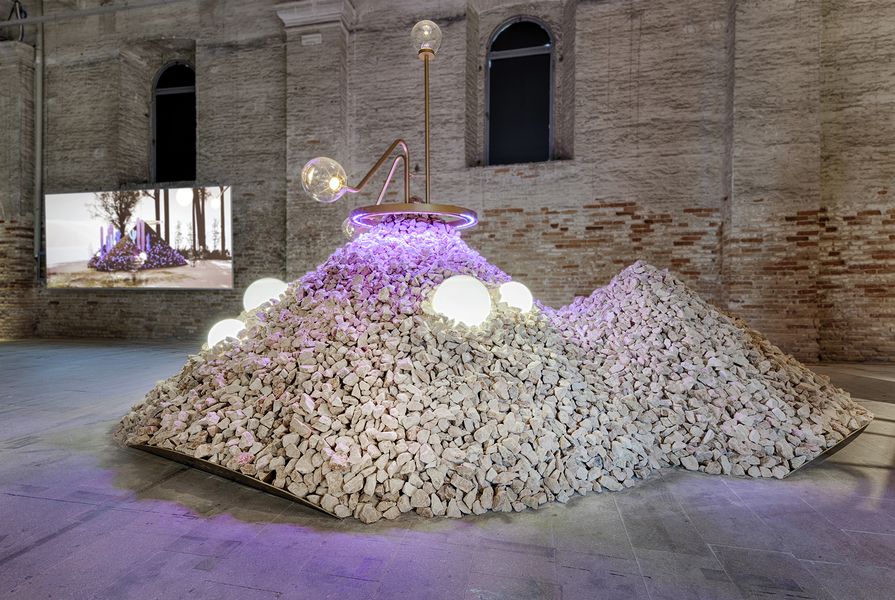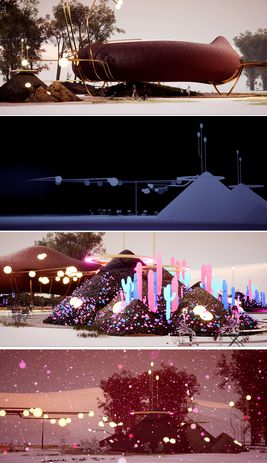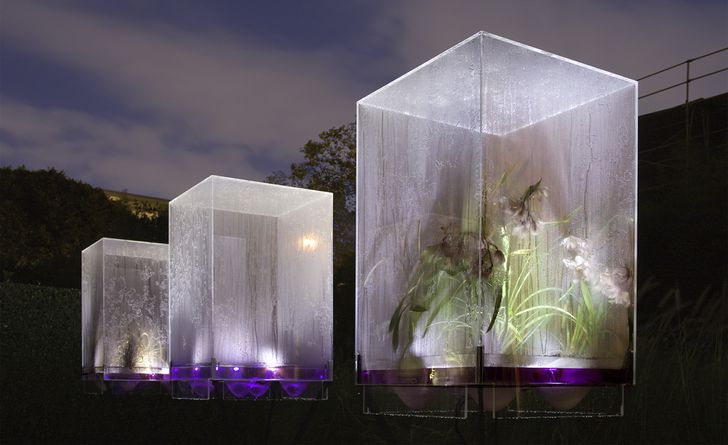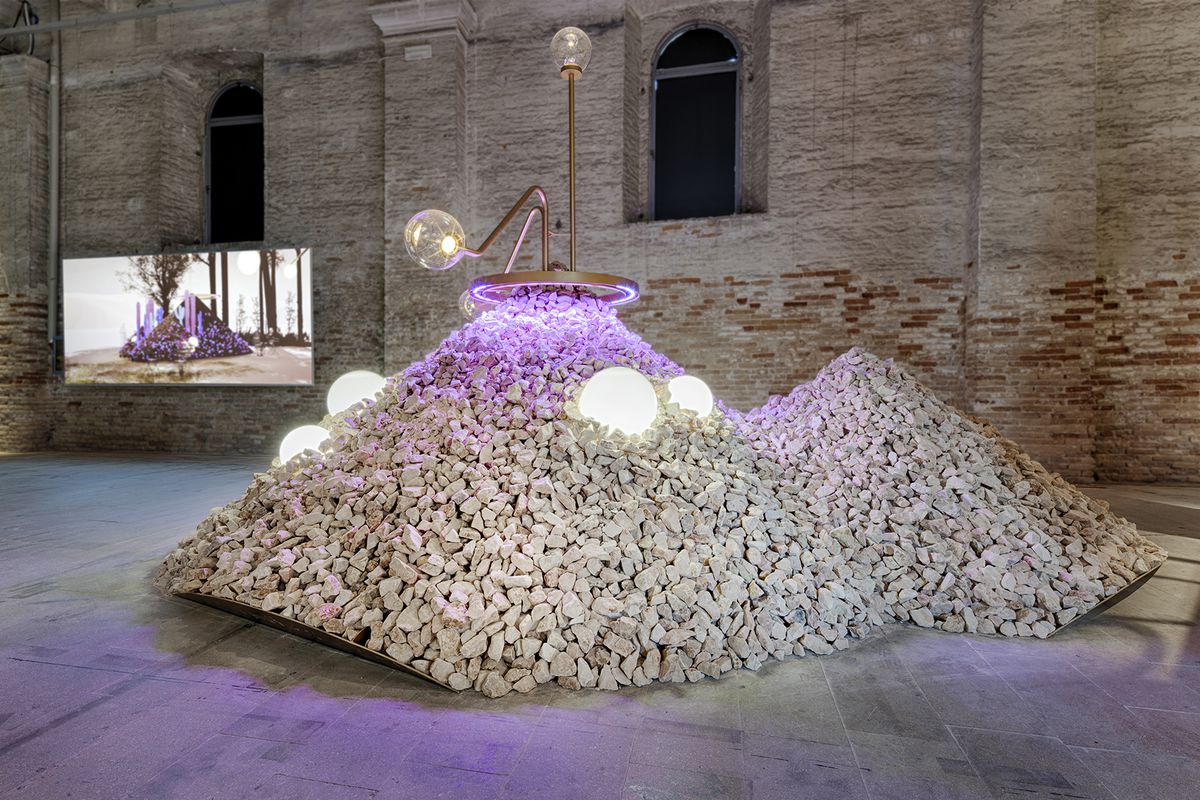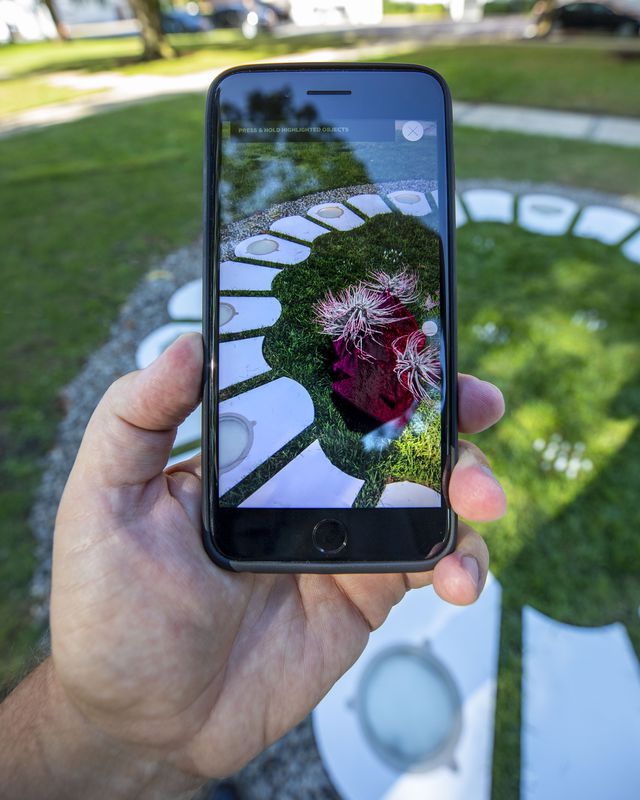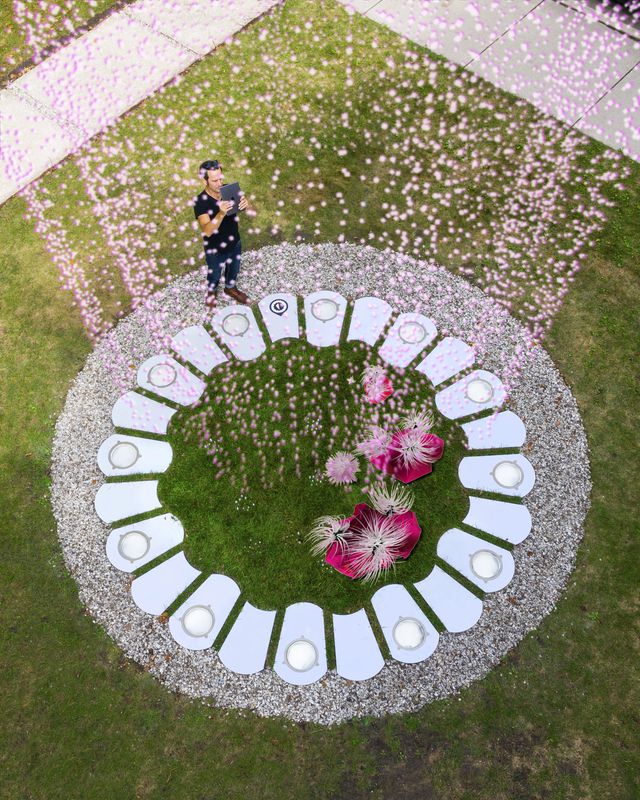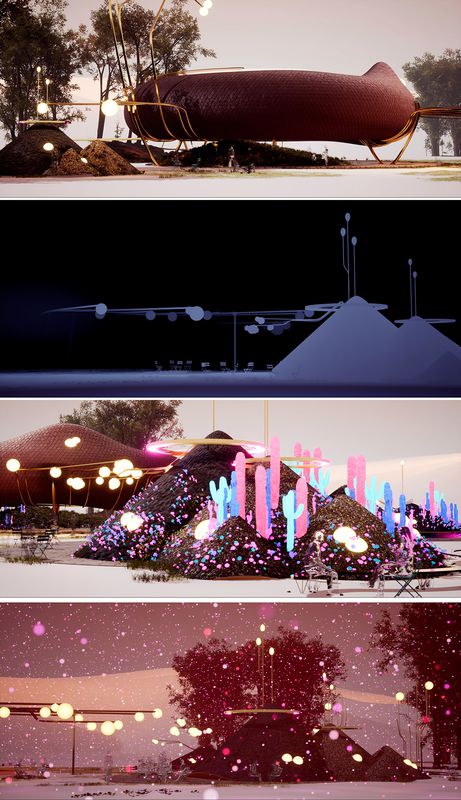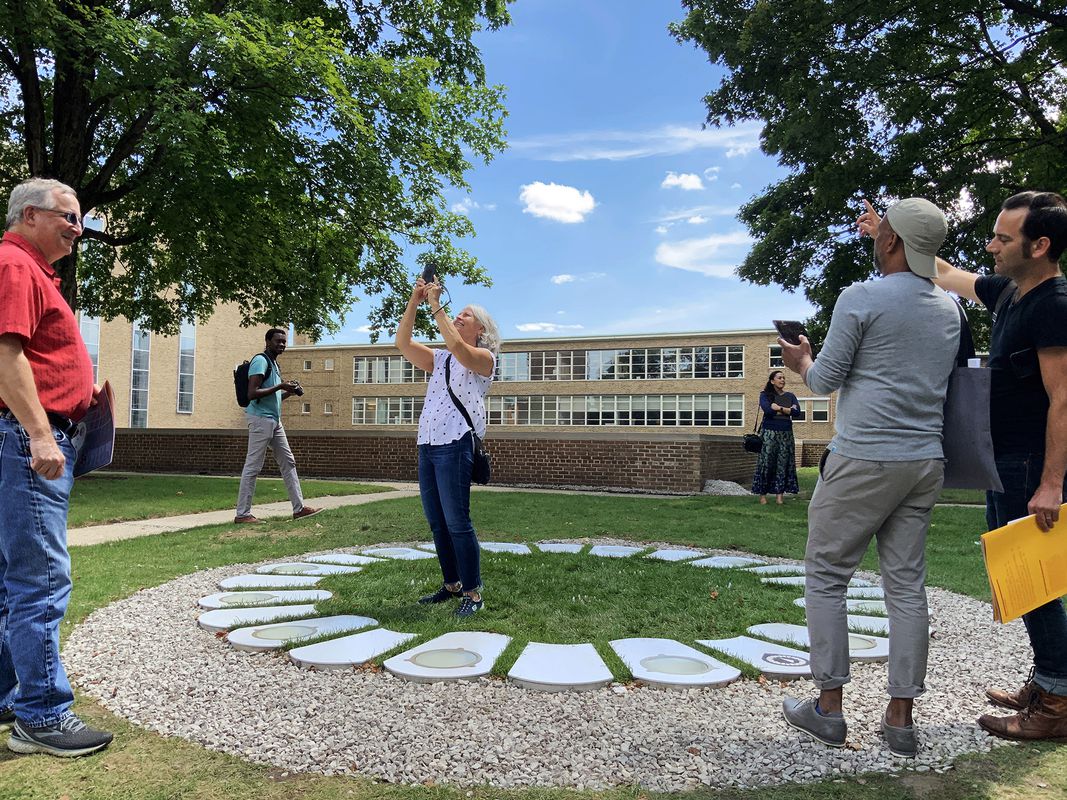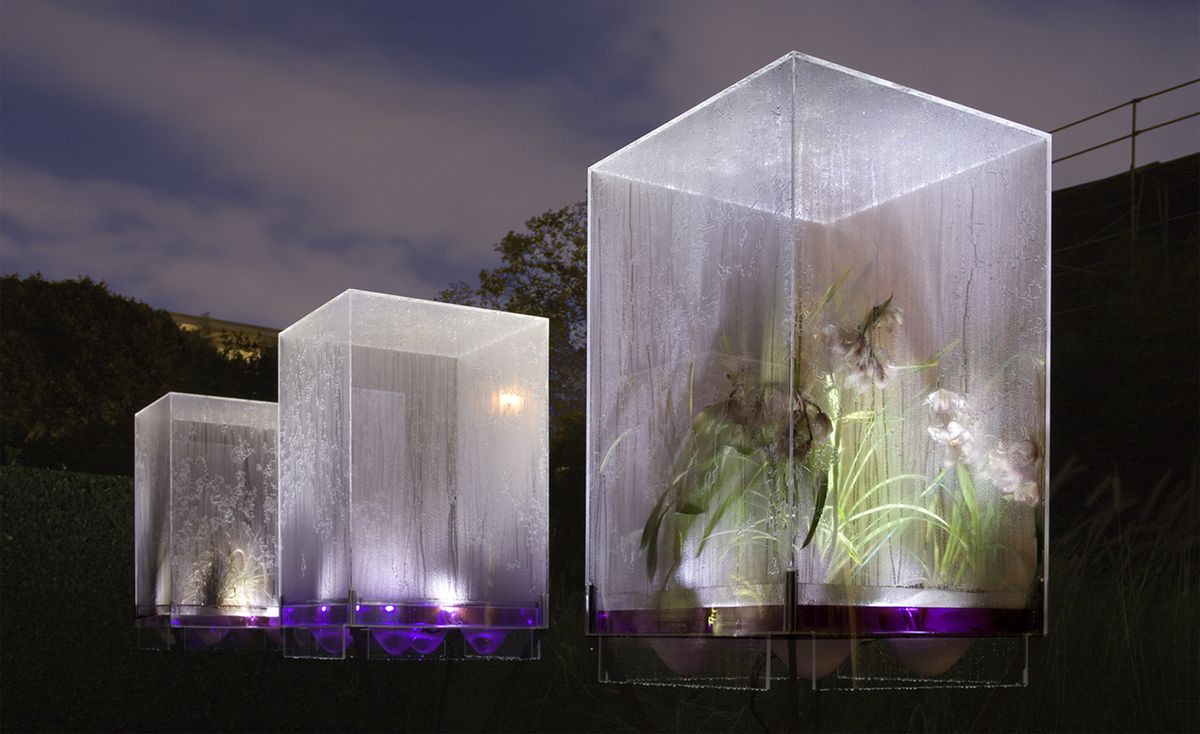Sean Lally is an architect, landscape architect and founder of Sean Lally Architecture based in Lausanne, Switzerland. He is the author of the book The Air from Other Planets: A Brief History of Architecture to Come and host of the podcast Night White Skies, an interview series that canvasses the possibilities for the future of the earth, the environment and spatial design. Emily Wong spoke to Lally about technology and the human body, thinking on expanded time frames and testing designs through gaming.
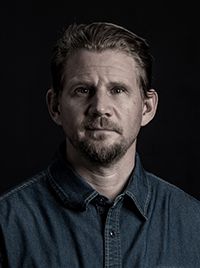
Switzerland-based architect and landscape architect, Sean Lally.
Image: Jordi Teres
Emily Wong: Your project at Shaped Touches currently on exhibition at this year’s Venice Architecture Biennale speculates on the changing ability of the human body to sense environmental conditions. Could you tell us about this?
Sean Lally: There’s been an arc within design and landscape architecture as to how we engage our environment and that has been about knowing more about the body. Shaped Touches developed out of the realization that we are manipulating our local and global environments and are also changing our bodies through healthcare and wearable technologies. These technologies are allowing us to access information about our environment in ways we haven’t before. Shaped Touches was about looking at public space and landscapes and realizing that, for a period of time, the question was, how can we make these places communal and get people to them, so that we can have a sense of community? But now, even if we can all access the same spot, it’s possible we’ll all be experiencing slightly different places. On the one hand, this is very exciting, but there’s also the realization that [these developments] are going to leave some people out. I think one of our roles, as designers, is to explore this.
The project looks at one particular environment and space. There’s a built prototype in the space that you can move and walk around and there’s a video recording that shows the same space, but run six or seven times with different sensory perceptions, that shows that even though we may all be in the same [physical] space, we may be perceiving slightly different information. Someone might be color blind, so be seeing a slightly different spectrum of light, or they might be working in augmented reality, for instance. As a society, we need to think about this, and my interest as a designer is to try to project some of the implications and opportunities of this for the near future.
Shaped Touches was designed pre-covid, the idea was that people would go up to it and see layers of local information on the prototype that they could access with their phone. So instead of it being about using technologies for a global network of communication, it was about using technologies for a hyper local connection. But due to covid, people weren’t allowed to congregate or sit around, and so we had to strip a lot of that out. That was a real test for the project – if this thing sits in a space and someone doesn’t have access to that, will it translate as a piece on its own?
Shaped Touches by Sean Lally at the 17th Venice Architecture Biennale.
Image: Giorgio Lazaro
We have a traditional idea of public space being somewhere where people can gather freely – something that’s obviously been challenging during the time of Covid.
Public space could be the more traditional sense of people gathering in a landscape location, or it could be something altogether different. Another way of thinking about it, instead, could be, how do we foster community?
What interests me the most, though, is how the physical spaces can become engaged and how we can think about community that way. When we have a space and you realize that two people within two meters of each other could very well not be accessing or sensing the same information, then how do we think about that? And is that because of economic abilities that someone has access to technology that allows them to see news information and data, or is it because of religious and political beliefs that people aren’t engaging with that information? With Covid, we’ve been seeing that people in the same household often have different political views when they had previously thought they were in agreement. And so when we start talking about things within the public realm, then what implications do those levels of friction have for spatial design? I don’t have any clear answers, but maybe we can say, what are some good questions we should be thinking about and asking to just bring this to the forefront and start having a discourse.
I’m interested in the title of your project, The Long Now, which you collaborated on with Matthew Wizinsky two years ago. What does it refer to?
That project was around the time the cathedral in Paris burnt down. There were stories going around that they had planted additional trees for that cathedral some hundred years ago should it need to be replaced and that that wood was currently growing in Versailles. That foresight for maintenance on such a large time scale kind of blew my mind. And so this idea of The Long Now was to say, let’s think about how we live in an environment as a long-term condition.
The idea for the project was to create a little outdoor microclimate that people could access and be in around all year. We looked at it in two phases, one, which was the physical space – there’s a graphic on a flat ground plane, and then around that we embedded full spectrum lighting, meaning vitamin D, and all the things you get from the sun, and also heating the soil using a method of electrical wiring, so that as the winter months came and snow fell [and sunlight was low], this area of land would still be growing grass.
On top of that, we overlaid levels of augmented reality that speculated on how the light spectrum reaching earth might, in 100, 200, 500 thousand years, due to climate change or other variables, not be the bandwidth of green that we now see, but could instead be near ultraviolet, and how that might affect plants. If our atmosphere is changing, could that mean that the light hitting the earth is also changing? Could that mean our biology changes? These are long discourses, but when you realize we’re on a path of warming, that doesn’t seem so far-fetched. The project mingles the physicality of landscape architecture with these other tools that allows us to interact with information and design in new ways. It also brings up the question, how can you build a physical base condition that is just as satisfying by itself, as well as knowing that it will be layered with multiple versions on top of it? And then, how do you talk about it, when no version is, for want of a better word, is “better” than the other.
The Long Now by Sean Lally and Matthew Wizinsky at Exhibit Columbus 2019.
Image: Hadley Fruits
The Long Now by Sean Lally and Matthew Wizinsky at Exhibit Columbus 2019.
Image: Hadley Fruits
How we think about time and time frames has such a large influence on how – and whether – we act.
People generally see ideas about what the future might be in two ways, through reading about science or on a movie screen. As designers, we have the ability to talk about future change and see what that might mean, so that all information about the topic doesn’t come from fictional movies or scientific papers, but actually comes from physical experiences that let people realize what our near future might be. This is something we should be embracing more.
In the past, you’ve worked with energy and atmospheres as a way of organizing space. What’s the flow on from that when it comes to your most recent work?
There’s been a long trajectory of designers getting access to new materials, iron, concrete, glass. As landscape architects, we’ve rarely invented any of those materials, instead our role is to see if and how we can implement them to produce new spatial and social technologies. For a long time, space was defined by surfaces, but energy is a gradient and has different organizational properties. Street lighting is a form of landscape space. When you’re in it, you have security, you have access and information, and it has a boundary, an edge, an inside and an outside. So, what does that mean for how we move through space and access things, and thresholds – and how does the body come into play? With energy, the thought has been that maybe we should stop thinking of this solely as a responsibility or efficiency question, and instead show people how we might use it to build space.
What are some interesting questions that you think the pandemic has opened up for spatial design practice?
My answer would be to go back to the public space question, which is what are the kinds of frictions and politics that Covid is showing up? People not wanting to get vaccinated, not because they don’t believe in it, but because they have other concerns about federal approval and testing of them, is one example. With Covid we’re seeing these same politics play out again across social and economic access and needs – which countries can access more vaccines for instance – but more in more severe ways. And you’re seeing new frictions in households and communities that thought they were on the same page that currently are not. These things aren’t specific to Covid, but they are parallel to it, and we can learn from them. Rather than clever versions of masks or clever versions of dividers on buses, instead we want to be examining these sorts of undercurrents that are pulling people in ways that we couldn’t see, simply by looking at the surface.
Amplification by Sean Lally at the MAK Center for Art and Architecture. Installation as part of the Gen(h)ome Project, 2019.
Image: Joshua White
Finally, what’s your key project at the moment?
I’ve been wanting to make a video component to my podcast, Night White Skies, for sometime now. I think video games are an interesting way of being able to engage age play and scenarios and things that maybe you can’t do as a designer because the cost would be so high. So I’m exploring how I might bring the podcast program through a video game software so that I can talk to my guests and we can gather in new kinds of spaces.
Aubrey Anable wrote a great book a few years ago called Playing with Feelings: Video Games and Affect about how video games can allow people to rehearse feelings and can be a way of simulating and foreshadowing, social and spatial futures that we’re not prepared for yet. They allow people to play through and experience drama and rehearse how to deal with conflict. As a way of seeing and foreshadowing implications, gaming seems to be an amazing way in which designers, landscape architects, architects and urban planners can think about the spaces they think are necessary, and actually test the ways people might actually use them, in a different way to, for instance, community engagement meetings. [The thinking in those cases is], let’s reach out to the community and see what they think of our work. But perhaps it’s only the same three percent of the community that comes to all those meetings and they all have the same feelings, so might be getting only very particular feedback which is intended to inform the public work, but which may not be representative of the community in the first place. Gaming could be a great way of allowing people to understand and experience space, that might otherwise be a board on a wall or a public meeting or outreach to the eldery, which can be a very small demographic. This project involving Night White Skies is, in a very naive way, about thinking about aspects of this.
The community engagement aspect is particularly topical at the moment, with the lockdowns making forms of engagement difficult, even while designs for these spaces are still needing to go ahead.
We may not have access to those spaces or those publics right now, but we know we will return in some way, maybe not exactly as in the past. That’s okay, but then, how can we be thinking about how we’re going to come back together?
For so long, games were for playing and they weren’t serious and their graphics were not considered to be of the caliber of the art that we think we do in landscape architecture offices. But now the quality of imagery is superior and we now know that play is just as important as reading a book. As architects and landscape architects we sometimes dismiss things as naive because they don’t fit within the doctrine of the discipline. We need to get over that very quickly if we’re to keep ourselves relevant.

